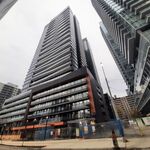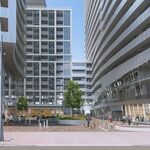Leo_Chan
Senior Member
Horizontal/diagonal escalators?How? They can't just move the terminal.
Horizontal/diagonal escalators?How? They can't just move the terminal.
People more likely to choose condos in East Harbour. Condos will sell for less in Sc arborough and cheaper looking. Plus this talk of centre centres amazes me. There is only one city and it is Toronto so that means one city centre which is City Hall.The land at STC is cheaper. With the subway coming at STC and the city completely revitalizing the whole area, I know I can sell at a higher price and make a profit. STC will attract condo developers. I think we all agree that office towers are unlikely to choose STC but condos? definately
People more likely to choose condos in East Harbour. Condos will sell for less in Sc arborough and cheaper looking. Plus this talk of centre centres amazes me. There is only one city and it is Toronto so that means one city centre which is City Hall.
I'm curious, are there any cities in the world where Metro Toronto's suburban centres models, as originally envisioned, has been successful?
People more likely to choose condos in East Harbour. Condos will sell for less in Sc arborough and cheaper looking. Plus this talk of centre centres amazes me. There is only one city and it is Toronto so that means one city centre which is City Hall.
I'm curious, are there any cities in the world where Metro Toronto's suburban centres models, as originally envisioned, has been successful?
London's Canary Wharf is a relevant case study. Took a long time for that project to work out, but it did. It's about patience, persistence..... and good transit.
- Paul
London's Canary Wharf is a relevant case study. Took a long time for that project to work out, but it did. It's about patience, persistence..... and good transit.
- Paul
Canary Wharf is in no way comparable to Toronto's suburban centres (Scarborough Centre, North York Centre, Etobickoe Centre, etc...)
Canary Wharf is located adjacent to central London. Roughly comparable to the location of Toronto's Portlands or the Unilever site. You can easily bike between central London and Canary Wharf in 20 to 25 min. And it's only a 10 minute trip between central London and Canary Wharf by transit. It's a totally different situation than Toronto's suburban centres.
London's Canary Wharf is a relevant case study. Took a long time for that project to work out, but it did. It's about patience, persistence..... and good transit.
- Paul
Canary Wharf's comparison in Toronto should be the East Harbour site.Canary Wharf is in no way comparable to Toronto's suburban centres (Scarborough Centre, North York Centre, Etobickoe Centre, etc...)
Canary Wharf is located adjacent to central London. Roughly comparable to the location of Toronto's Portlands or the Unilever site. You can easily bike between central London and Canary Wharf in 20 to 25 min. And it's only a 10 minute trip between central London and Canary Wharf by transit. It's a totally different situation than Toronto's suburban centres.
...Those conditions were reversed over time, and the site has flourished. The proponents went bankrupt along the way, but the site is now high value.
- Paul
I agree that Canary Wharf is fewer km's from the City Center than STC or NYCC, but I still think it has valid parallels. The absolute distance is not the key, it's more the issue of it being conceived from the start as a standalone city center.
When it was initiated, it was in an area that was considered desolate and unmarketable for both residential and business use. Originally it was thought unlikely (by all except the proponent) that employers would want to locate there because it was at a distance from the London business center. The 10-minute transit link didn't exist (it now has a direct line) and cycling really wasn't viewed as how one wanted to commute, as the territory in between was in a state of urban blight. It was also at a distance from London's commuter train termini. There was a glut of commercial real estate space in London at the time and urban planning was tilted against, rather than promoting, the site as a new business center.
Those conditions were reversed over time, and the site has flourished. The proponents went bankrupt along the way, but the site is now high value.
- Paul
People more likely to choose condos in East Harbour. Condos will sell for less in Sc arborough and cheaper looking. Plus this talk of centre centres amazes me. There is only one city and it is Toronto so that means one city centre which is City Hall.




